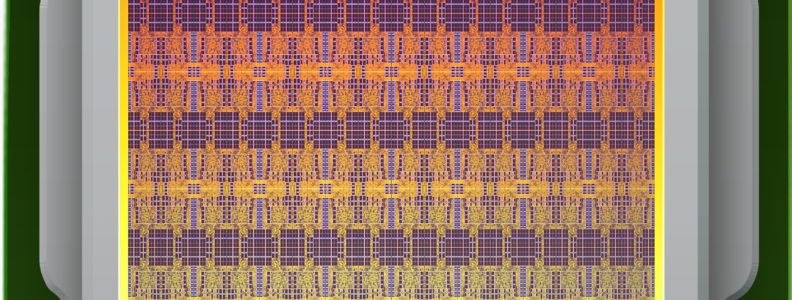Researchers from the US and Europe will reveal 3 new neuromorphic chips during the NICE 2018 conference hosted by Intel Corporation at the Jones Farm campus in Hillsboro, Oregon, February 27 to March 1.
| Register Now! | Agenda | Accommodations |
Neuromorphic chips mimic important aspects of biological brains like their energy efficiency, resilience and in particular their ability to learn. They promise to have a major impact on the future of artificial intelligence.
Intel Corporation will showcase their recently announced Loihi research chip with technical talks, posters, and several live demonstrations of the chip. Manufactured in Intel’s 14nm process technology, Loihi provides an unprecedented level of integration density and performance while supporting an advanced spiking neural network feature set that includes microcode-programmable learning rules. Loihi supports a range of on-chip learning models spanning supervised to unsupervised to reinforcement-based. Intel will launch a research partnership program at this event targeted at groups interested in using Loihi for neuromorphic algorithm and application development.
The new BrainScaleS-2 chip has been developed with support from the Human Brain Project in Europe. A prototype will be presented by Johannes Schemmel from Heidelberg University (Germany). BrainScaleS is a mixed analog-digital design operating 1.000 – 10.000 times faster than real-time. The new chip features programmable on-chip learning capabilities and a new concept called dendritic computation developed in close collaboration with neuroscientists.
Sebastian Höppner from TU Dresden (Germany) will present a prototype of the new SpiNNaker-2 chip. This work is also supported by the Human Brain Project. SpiNNaker-2 builds on the many-core architecture developed by Steve Furber from the University of Manchester (UK). It will feature 144 ARM Cortex M4F cores on a single chip with a very advanced power management delivering a computational power of 36 Billion instructions per second per Watt for a real-time simulation of complex neural networks.
All 3 new chip architectures will be demonstrated at the conference and experts will be available to discuss features and applications with prospective users.
Wide range of presentations at the NICE 2018 conference will focus on aspects of neuroscience, theories, algorithms and Neuromorphic chips that support the overarching workshop theme of new computing methods and new applications.
Confirmed Speakers
Terry Sejnowski, Salk Institute
Wolfgang Maass, TU Graz
Chris Eliasmith, University of Waterloo
Simon Knowles, Graphcore
Rick Stevens, Argonne National Laboratory
Weinan Sun, Janelia Research Campus, HHMI
Christoph von der Malsburg, Frankfurt Institute for Advanced Studies
Mike Mayberry, Intel Labs
Albert Lee, UCLA
Andrew Sornborger, Los Alamos National Laboratory
Brad Aimone, Sandia National Laboratories
Campbell Scott, IBM
Craig Vineyard, Sandia National Laboratories
Dhireesha Kudithipudi, RIT
Fritz Sommer, UC Berkeley
Gangotree Chakma, University of Tennessee
Garrett Kenyon, Los Alamos National Laboratory
Georgios Detorakis, UC Irvine
Hava Siegelmann, DARPA
Hesham Mostafa, UC San Diego
Johannes Schemmel, Heidelberg University
Kathleen Hamilton, Oak Ridge National Laboratory
Konstantinos Michmizos, Rutgers University
Maxim Bazhenov, UC San Diego
Mike Davies, Intel
Sam Green, Sandia National Laboratories
Sebastian Hoppner, TU Dresden
Sebastian Schmitt, Heidelberg University
Thomas Cleland, Cornell
William Hahn, MPCR
William Severa, Sandia National Laboratories
